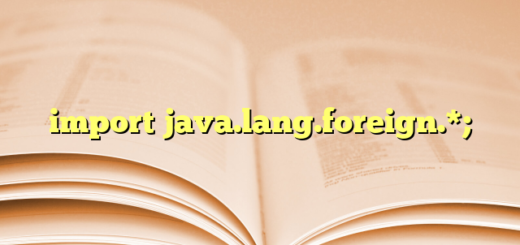Why Doesn’t Reflection Work in GraalVM’s Native Image?
1. How Reflection Works in Traditional JVMs
In a traditional JVM, reflection allows the application to:
✅ Discover and inspect classes, methods, and fields at runtime
✅ Dynamically instantiate objects and invoke methods
✅ Access private members using reflection APIs
Example of reflection in Java:
import java.lang.reflect.Method;
class Test {
public void hello() {
System.out.println("Hello, Reflection!");
}
}
public class ReflectionExample {
public static void main(String[] args) throws Exception {
Class<?> clazz = Class.forName("Test");
Object obj = clazz.getDeclaredConstructor().newInstance();
Method method = clazz.getMethod("hello");
method.invoke(obj); // Output: Hello, Reflection!
}
}
Why This Works in a Traditional JVM
- The JVM loads classes dynamically at runtime.
- It can resolve method names, fields, and classes on the fly.
- Bytecode remains available throughout execution.
2. Why Reflection Fails in GraalVM Native Image
GraalVM Native Image mode compiles Java AOT (Ahead-of-Time) into a native executable.
This means:
- No dynamic class loading at runtime 📌
- Only classes known at compile time are included 📌
- No metadata for classes, methods, or fields unless explicitly registered 📌
What Happens When Using Reflection in Native Image?
If you run the previous reflection code in a GraalVM Native Image, it will fail with an exception like:
java.lang.ClassNotFoundException: Test
This is because:
- The
Testclass was not explicitly marked for inclusion. - Native Image removes unused classes and methods for optimization.
- Reflection depends on metadata that doesn’t exist in the compiled binary.
3. Workarounds: How to Use Reflection in GraalVM Native Image
GraalVM allows limited reflection if you explicitly declare which classes and methods should be retained.
Solution 1: Reflection Configuration Files
You need to tell GraalVM which classes will be used reflectively by using a JSON configuration file.
Example reflect-config.json:
[
{
"name": "Test",
"allDeclaredMethods": true,
"allDeclaredConstructors": true
}
]
Then, pass it when building the native image:
native-image --initialize-at-build-time --reflect-config=reflect-config.json -jar myapp.jar
Solution 2: GraalVM Reflection Annotations
Instead of a JSON file, you can use GraalVM annotations to keep metadata:
import com.oracle.svm.core.annotate.*;
@ReflectiveAccess
class Test {
public void hello() {
System.out.println("Hello, Reflection!");
}
}
With this annotation, GraalVM will retain the class metadata.


